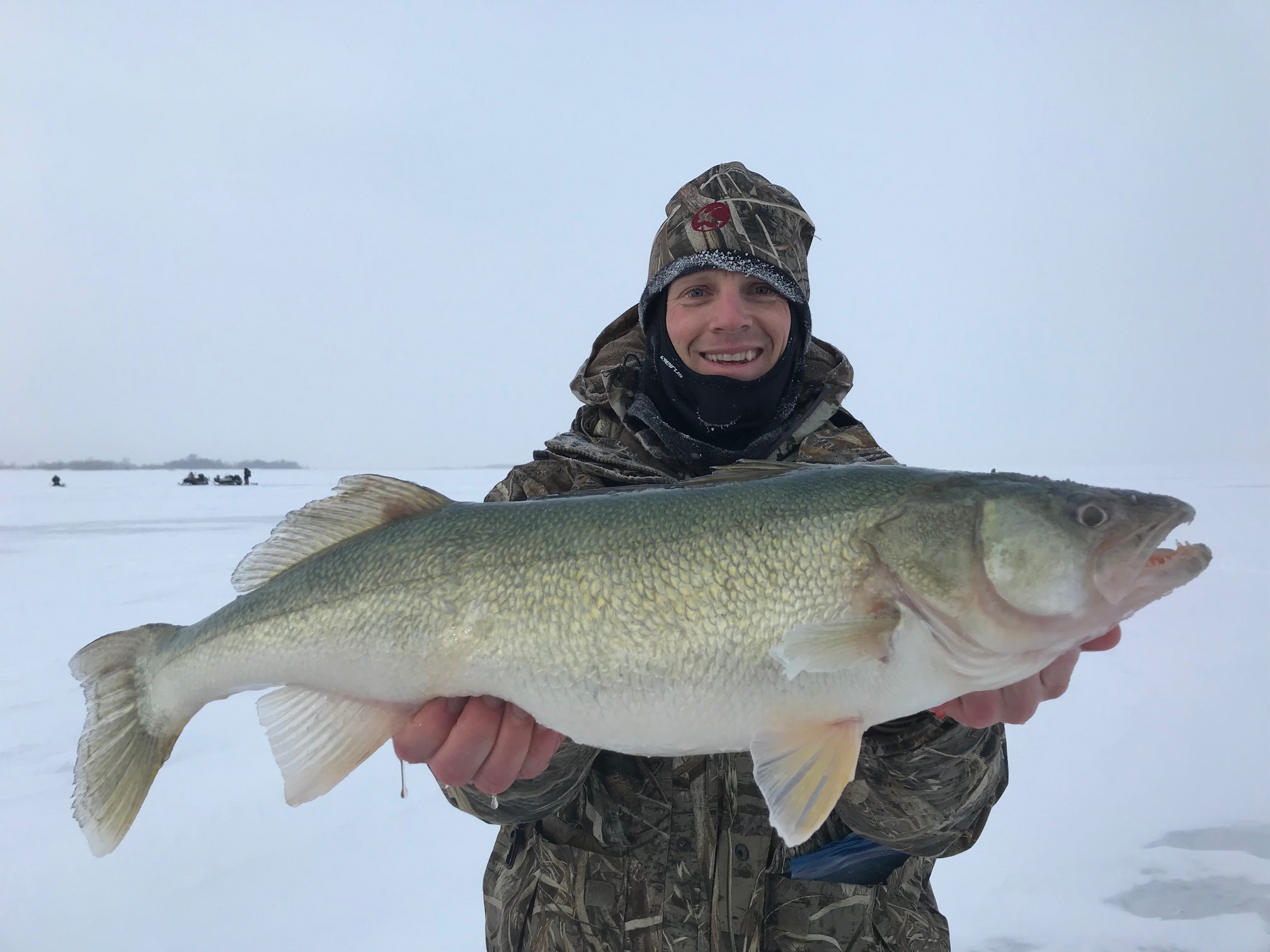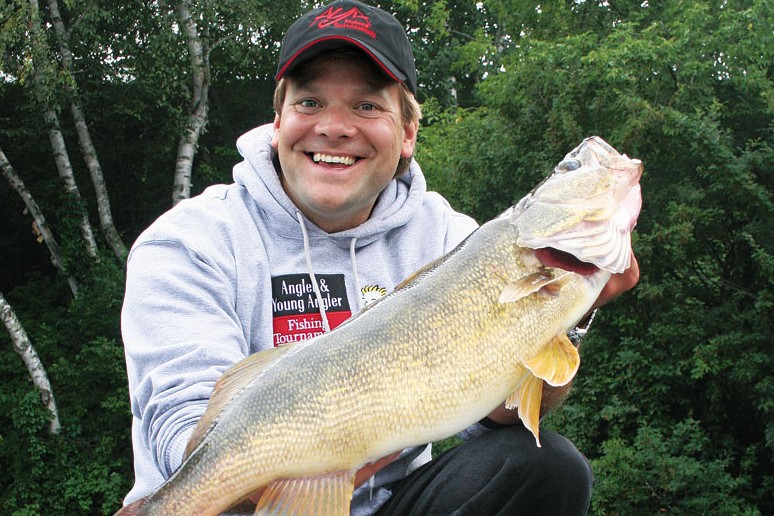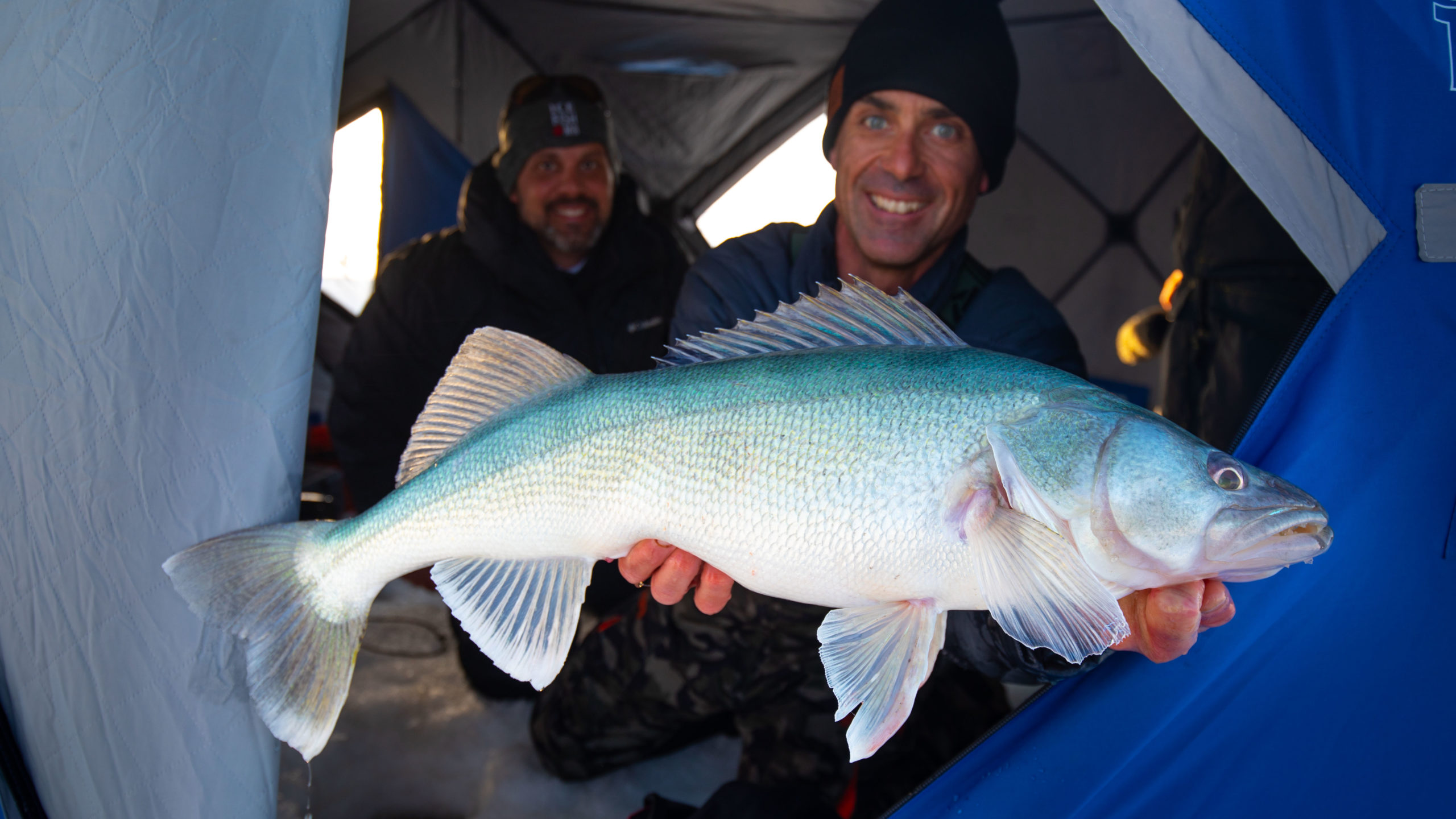Lake Winnipeg Walleye Slot Size
- Lake Winnipeg Walleye Slot Size Chart
- Lake Winnipeg Walleye Slot Sizes
- Lake Winnipeg Walleye Size Limit
Every year an unusual phenomenon happens on Lake Winnipeg. Among the golden walleye, a significant number of the species sporting a shocking green shade start showing up. We asked Lake Winnipeg hardwater guide Jason Hamilton—who also happens to be a biologist—of Jason Hamilton Outdoors what’s going on.
Unique to Lake Winnipeg and its tributaries, the world famous “Greenback”, is a growing phenomenon that has taken the walleye world by storm. This amazing color phase walleye showcases iridescent, emerald green colors on its back and bright silver on its sides, an astonishing display that is only exceeded by their own reputation to grow to. Commercial fishing with gillnets accounts for 90 per cent of the walleye taken on the lake. In 2016, the commercial quota catch was 3.1 million kilograms, down from 4.2 million in 2010. Currently, there’s no regulation on maximum mesh size, so most commercial fishermen use nets that target the biggest fish, often females. Lake Winnipeg Walleye Ties for World Live Release Record. It's official, Lake Winnipeg has produced a giant 34 inch walleye that has been recognized by the Freshwater Fishing Hall of Fame as one of three, ice fishing catch and release world records! This amazing greenback walleye is a true testiment to the world class. 'Lake Winnipeg has big walleye — there's good food sources in the lake for the walleye, so they're able to grow to a very large size. It's been like this for a while. This isn't the first year. Lake Winnipeg slot size: Thirsty44: Ask a Game Warden: 12: 04:03 PM: Lake Wpg slot limit: RedRiverRick: West Side LW Reports: 18: 02:48 PM: Manigotagan Slot Size? CrankenStein: On The Boat: 4: 01:14 AM: Walleye slot on Winnipeg River? Snarble: Ask a Game Warden: 5: 11:24 AM.
Q: What is a greenback?
A: The term used to describe the iridescent green walleye in Lake Winnipeg.
Q: Are they biologically any different from regular walleye?
A: They aren’t genetically different, from other walleye, however, with the large amounts of bait fish in Lake Winnipeg, greenbacks grow quickly. The unique colouration is thought to be due to the limestone substrate around Lake Winnipeg.
Q: Are they only found on the Red River and in Lake Winnipeg?

A: Though there are various places where walleye have different colourations, a greenback is unique to Lake Winnipeg and its tributaries.
Q: When does the run of greenbacks start? When does it typically end?
A: These fish start to run up the rivers in the south basin of Lake Winnipeg in September, where some will overwinter. The bulk of the greenbacks move south towards the Red, Winnipeg and other rivers in the south basin preparing for a spawning run in early spring, after which the fish disperse throughout the lake.
Q: In hard water season, what kind of tackle is recommended to catch greenbacks?
A: Lipless crank baits or rattle baits are the go-to bait to locate fish in the vast flats of Lake Winnipeg. Spoons and jigs tipped with live or salted shiners will help tease finicky fish into eating. Due to the structure of the lake and how greenbacks have to chase their prey, they usually strike baits viciously.
Q: At what depth are greenbacks usually found?
A: In winter most of the fishing for greenbacks in Lake Winnipeg takes place in five to 20 feet of water.
Q: What size of greenbacks should be kept as eaters?
A: These fish are big for their length. Fish in the 14 to 20 inch range are perfect for the pan. Smaller fish usually taste better and are not the prime spawning contributors to the population.
Few fish capture the attention of serious anglers like the walleye. Many of us spend countless hours on the water chasing down these awesome fish and most would drool at the thought of catching a 30 inch walleye.
Having only caught one 30 inch walleye myself, I couldn’t help but wonder how many years it took for that fish to get so big. After releasing her safely back into the water I thought it might be worthwhile to investigate.
Come to find out, I am not the only curious angler out there. So how old is a 30 inch walleye?
A 30 inch walleye averages 16 to 25 years old. Growth rates largely depend on habitat quality and forage abundance. After reaching maturity around year three, walleye grow between 0.5 and 1 inch per year. Walleye also grow slower in northern latitudes where colder climates decrease their metabolism. This results in 30 inch walleye that are older than average.
I find it amazing that walleye live so long and is a true testament to their ability to survive. Catching a 30 inch walleye won’t be something I soon forget and neither would you. There is more to these fish than meets the eye so here are some helpful facts to guide you on your quest for trophy walleye.
Male and female walleye growth rates
Beneath the water’s surface competition is fierce and size matters. For walleye, that means egg-bearing females need to grow faster and bigger than males. In just about every walleye lake, males peak out at 12-15 years old and reach 24-26 inches in length.
Females, on the other hand, often grow to 25 inches in half the time. By 16 years, quality lakes produce giant, 30 inch female walleye.
Since many anglers like to know how old their catch is, we made a simple chart to provide an average age estimate for both male and female walleye at various lengths.
Average Walleye Length vs. Age
The information in this table is an estimate, but far from a random guess. We scoured through many walleye growth rate reports published by several fish and wildlife departments across the country. The ‘Length vs. Age’ table we put together is a good average for most locations across the US.
How big do walleye get
While a 30 inch walleye is big, they do get even bigger. The world record walleye caught by Mabry Harper in 1960 was supposedly 41 inches long and weighed in at 25 pounds. It’s reasonable to assume that a walleye that size is well over 20-25 years old.
Fewer than one percent of walleye exceed 30 inches. You should definitely count your self lucky if you catch one. However, water bodies with ideal habitat can consistently produce trophy walleye. Places like Lake of the Woods, Lake Winnipeg and Lake Erie pump out 30 inch walleye more often.
For anglers wanting to fish for true giants, the perfect habitat is more limited. The Columbia River is the west’s finest walleye fishery and is expected to produce the next world record. The biggest walleye get pulled from the McNary and John Day pools but giants are possible anywhere along the 1,200 mile stretch flowing through Washington State.
There are many lakes in the US and Canada that grow huge walleye. Tobin Lake, Bay of Quinte, Green Bay and the Mississippi River system are among a few of the top ranked waters. Most anglers probably won’t even bat an eye over 30 inch fish in these spots.
Nowadays, it’s not impossible to find walleye pushing the 36 inch mark. In average walleye fisheries you can expect trophy fish to top out at 26 to 28 inches.

The importance of catch and release
Some of the finest walleye fishing occurs where the majority of anglers understand the importance of catch and release fishing. Since most of the trophy walleye are egg-heavy females, releasing them safely and quickly ensures the survival of the top breeding walleye.

It also gives the biggest walleye a chance to get even bigger. Who knows? The fish you release today may become the next state record in the future.
Mature females can lay up to 50,000 eggs each year and their egg production increases as they age. Females in the 30 inch range lay upwards of 250,000 eggs. This is why lakes managed for walleye fishing employ a slot limit on fish that restricts over harvesting of spawning females in their prime.
The majority of walleye over 22 inches are female since very few males actually reach these lengths. There’s nothing wrong with keeping fish to put food on the table though. Just do your best to keep fish in the 14 to 18 inch range if it’s legal to do so.

No angler should go without a bump board to measure their catch. Not only is it a good way to quickly measure legal fish, it also lets you size up potential trophies or your new personal best.
We like the Frabill Expandable bump board. It is inexpensive and compact so you can take it anywhere. Check it out on Amazon.
How much does a 30 inch walleye weigh
We anglers like to know how much a fish weighs. It’s how you track a new “personal best” and gives you bragging rights among friends. However, not everyone has a scale, nor is it always easy to weigh fish and release them safely back into the water.
On average, a 30 inch walleye weighs 10 to 12 pounds. Of course, this can vary. Some fish are long and skinny while others may be plumped up with eggs during the spawn.
Most of the time you can accurately estimate the weight of a fish from the length alone. Add in a girth measurement and you can really dial in the accuracy of a walleye’s weight. The girth helps to account for fish with larger bellies and should be factored in if you catch a spawning female.
Lake Winnipeg Walleye Slot Size Chart
There are two basic formulas widely used by walleye anglers to estimate weight.
When only the length of the walleye is available, use this formula:
(length X length X length / 2700)
If you manage to get a length and girth measurement, use this formula:
(length X length X girth / 1200)
Remember, the girth is the circumference of the fish measured around the widest part of the belly.
Lake Winnipeg Walleye Slot Sizes
For those of you looking for a simple, yet accurate, walleye length to weight comparison, here is a quick reference chart.
Walleye Length to Weight Conversion Chart
Determining the age of walleye
In healthy walleye populations, males typically live for 15-20 years. Female walleye out live males by 5-10 years and average a maximum life span of 24 years. The oldest walleye on record was shown to be nearly 30 years old.
To accurately measure the age of a fish, scientist use the otolith bone, which is the inner ear bone. Much like aging a tree by counting rings in the wood, the otolith contains growth rings too. They cut out the bone and crack it in half. It’s then charred over a flame and viewed under a microscope to count the rings, which correspond to the walleye’s age.
Lake Winnipeg Walleye Size Limit
You can also determine the age of walleye, yellow perch and sauger yourself. Growth rings similar to the otolith bone also occur on the gill plat or operculum flap.
Carefully cut away the flap and remove the soft tissue. Then place it in hot water to loosen any remaining skin and muscle. The hard operculum should look a little like glass. Let it dry overnight.
All you need to do is hold it up to a bright light and count the dense white lines. Each white segment represents a winter season. The total number of white segments is the approximate age of the fish.
It is a fun experiment to try and entertaining for the kids too. Interestingly enough, the biggest walleye are not always the oldest.
Final thoughts
It’s important to appreciate the time it takes a trophy walleye to reach an impressive 30 inches long. Only the toughest walleye in the best habitats will ever reach those lengths.
With more anglers fishing every year, it is critical that we all do our part to preserve trophy fisheries. That means adopting good catch and release practices to protect large breeding females.
Walleye populations are very sensitive to over-harvesting, so only keep what you can eat and only retain the more abundant males around 18 inches in length.
Every big female you release is another opportunity to catch a monster walleye next season.